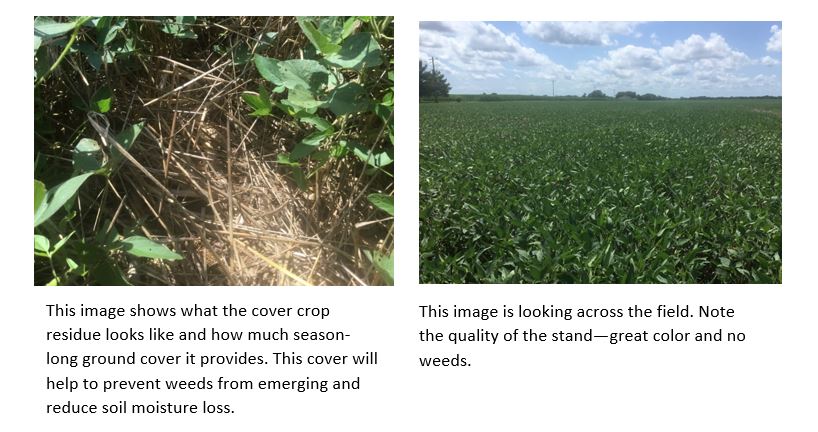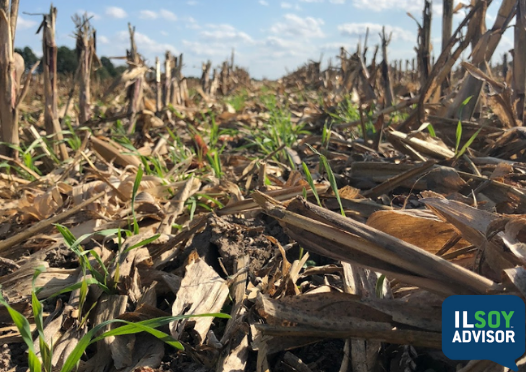I grew up on a small corn and soybean farm in Crawford County, IL. I enjoyed growing up on the farm and helping in the summers. I appreciated the lessons it taught me about making do with what you have and the valuable lessons you can only learn from manual labor. While I decided to leave the family farm for college, I was able to stay connected to agriculture through my education, majoring in Agricultural Engineering at the University of... Read More →
ILSOYADVISOR POST
Stop, Look & Ask: The true steps for understanding cover crops
August 07, 2019
Have you ever had a field that you drove by several times a week, and something about it really intrigued you? Well I found mine this past year located in Macoupin County. All winter and spring I watched a rye grass cover crop field not only grow, but hold back erosion and suppress winter annual weeds. Every day I drove past this field I would think for several miles down the road about how maybe I had the wrong thoughts on cover crops, how I didn’t see soil erosion compared to other tilled fields this spring and how after massive rain events I didn’t see much ponding.
The agronomist in me started thinking about all the benefits this field and grower experienced from the cover crop during the challenging spring of 2019. I reached out to this grower to ask if I could walk his field and interview him. The farmer, Mike Johnson, graciously agreed.
After walking the field, I had an opportunity to visit with Mike about his cover crop system. He indicated that they air seed shortly behind the combine pass, up to mid to late November, at a rate of 1 (+) bu/A. In the spring Mike planted soybeans into the green cover followed by a single application of glyphosate to terminate it. Mike went into detail about the successes and even challenges that he’s experienced during his cover crop journey (a journey of self-discovery), and regardless of the challenges or increased management efforts he sees value and will continue to learn and adapt.
My observations as an agronomist:
- Soil compaction probe found very minimal restrictive layers
- Soybean plants weren’t competing with any weeds, NO WEEDS were present
- No in-crop application of a herbicide was needed
- Soybean plants weren’t deprived of any essential nutrients
- The soil was completely covered by the cover crop residue that help preserve the soil moisture
- Roots had well developed nodules (nitrogen production)
- On July 16th the soybean plants already had 16 poding sites
Observations from Mike:
- Reduction in waterhemp pressure, when the cover crop isn’t grazed by cattle
- Marestail is reduced, but depends on the season and cover crop establishment
- Cocklebur, velvetleaf, morning glory nearly eliminated
- Has improved low yielding zones, such as clay nobs
Recommendations passed on by Mike:
- A cover crop system is fun, but it has its own set of challenges and one must think differently
- It can take a few years to get your system working how you want it to, but it can also take a little bit of time for your soil to adjust as well (change takes time so be patient)
- In the spring, one needs to be more aware of soil moisture and maybe wait a few days longer before entering the field
- Re-evaluate your residue management to include both the previous corn crop as well as winter cover crop; you may need less. Have a good program in place to terminate the cover crop so it doesn’t compete with the soybeans

At the end of the day cover crops may not work for every grower or every field, however field observations and grower testimonials can help one understand the value of using different agronomic tools. Next time you’re driving past an interesting field, start thinking about how it can benefit the soils and yields on your fields and be willing to call a stranger and ask them about their experience. You never know what you will learn that could help in closing the yield gap or making production more sustainable on your farm.





Comments
Add new comment